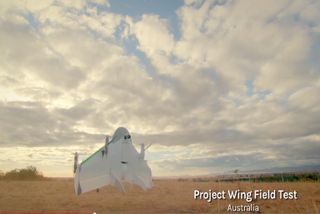Google's secret Project Wing drones could give speed to Google Shopping Express deliveries

Though your next Nexus smartphone may not be delivered by Google via its delivery drones, or Amazon's drones for that matter, Google has been actively and secretly flight testing drones in Australia for some time now. Dubbed Project Wing, after two years of testing and development of this ambitious endeavor, Google's research team has concluded that the task can be achieved and that future deliveries could be made by these self flying vehicles.
And although these drones could be used to deliver goods, like in Google's Shopping Express delivery service, Google says that it could also be used in emergency situations and with disaster relief, like sending defibrillators or emergency supplies to disaster-stricken regions. Google rival Amazon has already showcased its own experiments with drones.
In contrast to Amazon's more utilitarian helicopter design, Google's drones appear more striking. The drones were designed by Google X labs and they weigh in at just over 20 pounds with a wingspan of 5 feet that is driven by four propellers allowing.
"The small, white glossy machine has a "blended wing" design where the entire body of the aircraft provides lift," the BBC noted. "The vehicle is known as a "tail sitter" - since it rests on the ground with its propellers pointed straight up, but then transitions into a horizontal flight pattern."
The hybrid design allows the drones to take off and land without a runway while still allowing it fly quickly and efficiently.
The flying vehicle is also equipped with GPS, cameras, radios, and a number of different sensors. But because of its light weight, don't expect Project Wing to be able to do much heavy lifting in delivering heavier packages.
And unlike other drone delivery projects, Google's un-manned flying vehicle will not land to drop off goods, and that may be a good thing. Citing safety reasons, people want to touch the drone and that could cause injury if the propellers are still spinning, Google will tether packages with a string and drop the packages onto the ground before flying away.
Be an expert in 5 minutes
Get the latest news from Android Central, your trusted companion in the world of Android
Still, with changing regulations, it's too early to tell when Project Wing could become a reality. It may be an uphill battle, but at least its a project that Google says is "surmountable."
Source: BBC, The Atlantic

